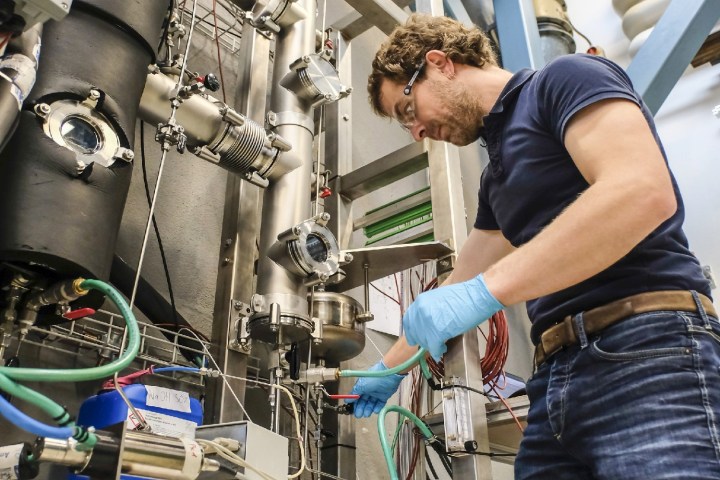
The idea of storing excess heat for later use has been around for decades. However, many of these approaches rely on large hot water tanks in buildings, which present such problems as low-energy density and a high thermal loss during storage.
The new approach, developed by researchers at the Swiss Federal Laboratory for Materials Testing and Research (known as EMPA), hopes to solve this.
“[Our] heat storage system is charged from heat or electricity source such as solar thermal collectors, photovoltaic collectors in summer,” Benjamin Fumey, a researcher on the project, told Digital Trends. “In winter, the storage system is able to supply heat for space heating or hot water similar to a common heat pump, except that practically no electricity is required. The system features no heat loss during storage time, and has a thermal energy density of approximately 440kWh/m3 — compared to water, which has 60kWh/m3 at a temperature difference of 50K.” That’s equivalent to a temperature difference of 90 degrees Fahrenheit.
This method of stockpiling summer heat relies on a chemical process involving a solution of caustic soda, which is able to store heat for a lengthy period of time. When caustic soda is heated, the water evaporates from it, while the heat is stored until it comes into contact with more water. When it does — even if this is months or, potentially, years later — the heat is released again.
A prototype of the solar-powered system has been working reliably at EMPA since last year. Rolled out to the public, the invention could not only allow heat to be “bottled up” and then reused in homes, but also transported in its solid caustic soda form.
“At present we have a lab-scale system up and running for the past twelve months,” Fumey said. “The upcoming 12-to-24 months will find us upscaling to a fully functioning building-integrated heat storage system.”


